NVIDIA GPU’s come equipped with a hefty suite of built-in features, all designed to level up your gaming experience. One of which is G-Sync Ultra-Low Motion Blur 2 (ULMB 2).
We’ll be taking a closer look at this brand-new display technology, covering what it is, how to set it up, and how ULMB 2 can help boost your gaming performance.
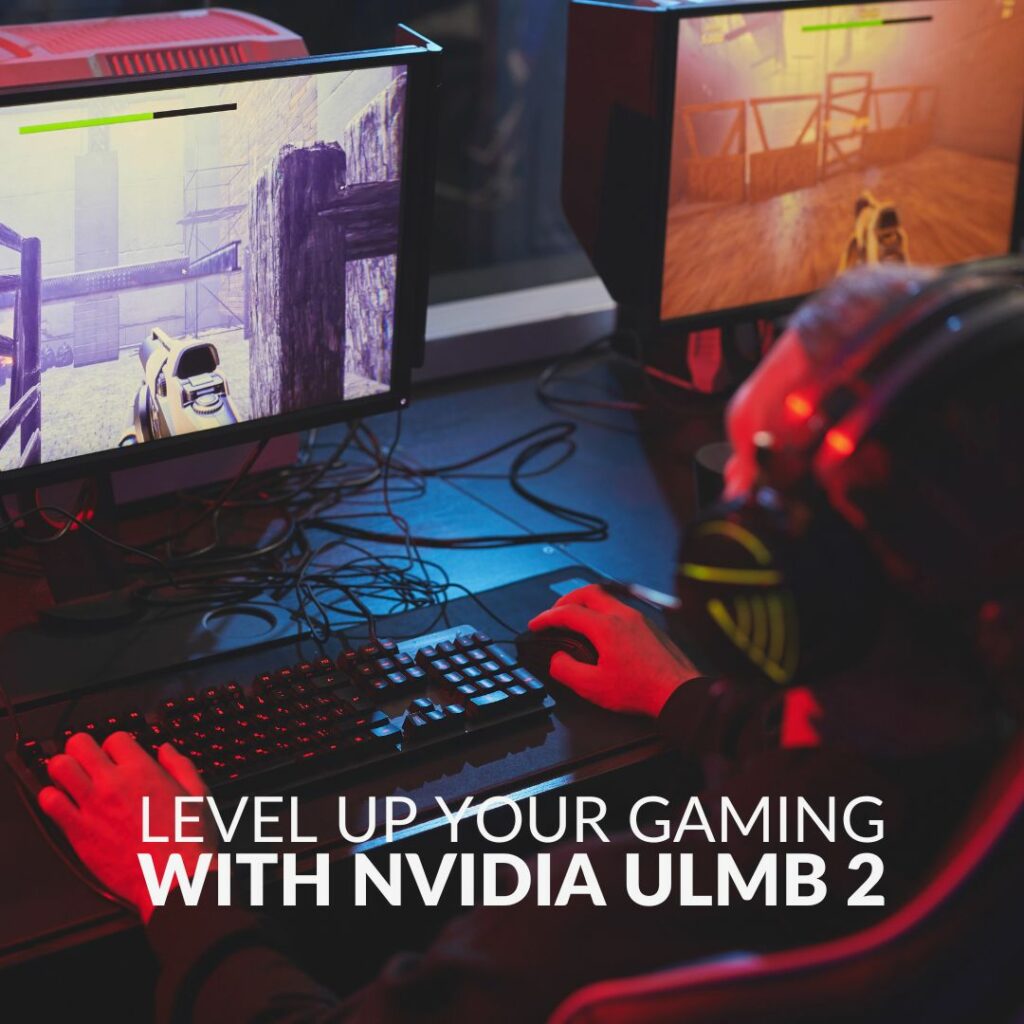
What is NVIDIA G-Sync Ultra Low Motion Blur 2?
NVIDIA G-Sync Ultra Low Motion Blur 2 expands on the original version, first released back in 2015. Designed to improve the way in which moving objects are displayed on screen, ULMB 2 effectively reduces the negative effects of motion blur. It does this by implementing backlight strobing.
With Ultra Low Motion Blur 2 enabled, your monitor’s backlight is only turned on when every pixel has reached its correct colour value. This ensures any pixel transitioning isn’t on display, reducing motion blur, stuttering frame rates, and screen tearing.
As a result, enjoy brighter, high-res images and videos, with no screen-tear or latency for enhanced immersion.
You can see ULMB 2 in action compared to a standard 120Hz monitor in the video below.
The Benefits for Gaming and Esports:
For gamers and esports professionals alike, ULMB 2 offers you a competitive edge over your enemies. Thanks to the high-res visuals, extreme responsiveness, and minimal screen tear, you’ll be able to see every second of your gameplay in lightning-fast speeds.
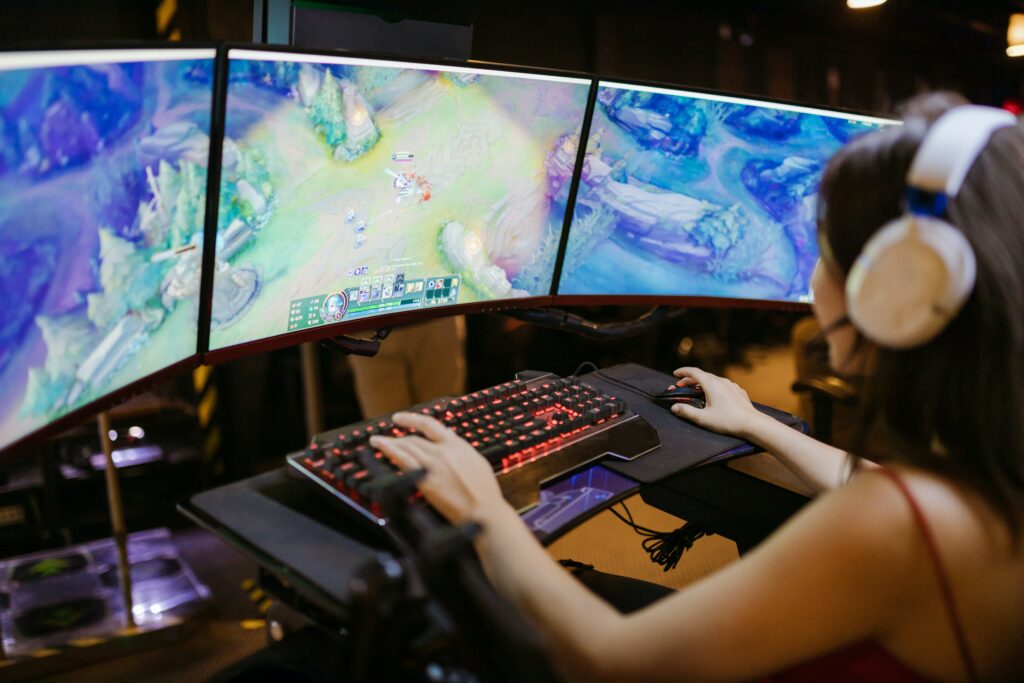
Monitor Requirements for NVIDIA G-Sync ULMB 2:
In order to take advantage of Ultra Low Motion Blur 2, you need a compatible monitor that meets the following requirements:
- Motion sharpness over 1000Hz
- ULMB 2 must run at the full refresh rate of the monitor
- Have over 250 nits of brightness with minimal overshoot (accurate colour representation)
If your monitor meets these requirements, you’ll be able to download the compatible ULMB 2 driver update from the NVIDIA website.
How to Enable NVIDIA G-Sync ULMB 2:
Once you’ve downloaded the updated Ultra Low Motion Blur 2 driver, you will first need to disable NVIDIA G-Sync Variable Refresh Rate in the NVIDIA Control Panel. If you don’t, your monitor’s backlight won’t be able to enter backlight strobing mode.
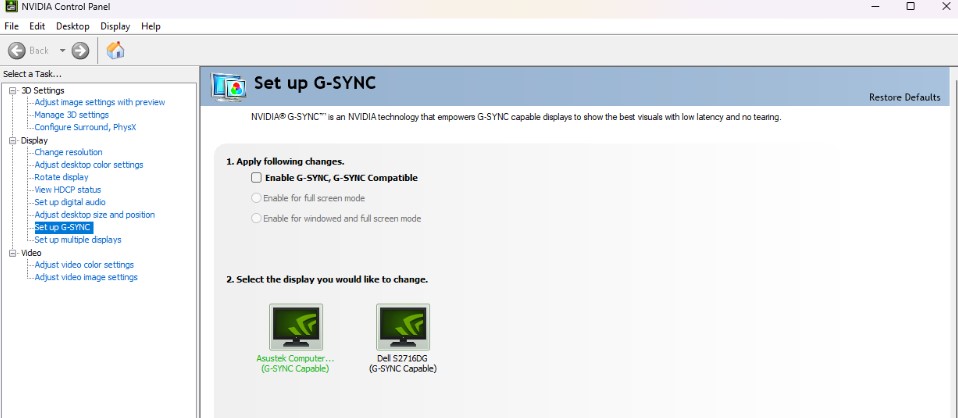
After this, go into your monitor’s screen display settings and enable NVIDIA G-Sync ULMB 2.
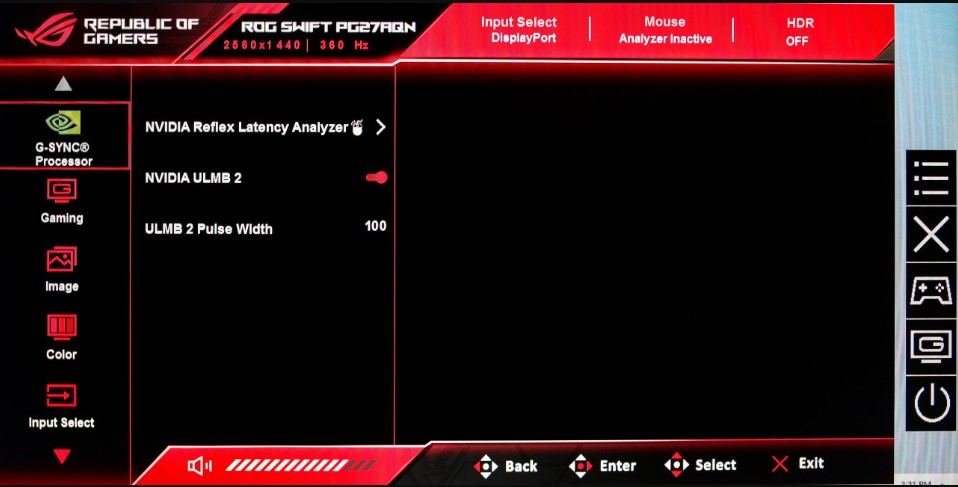
That’s it! You have Ultra Low Motion Blur 2 enabled and are ready to enjoy high-res visuals in all your favourite games.
Our Top NVIDIA G-Sync ULMB 2 Compatible Monitors:
Currently, there is only a small selection of gaming monitors that support the Ultra Low Motion Blur 2 drivers. However, more compatible monitors are set to be released soon.
ASUS ROG Swift PG27AQN 27’’ Gaming Monitor:
Become immersed in all your favourite gaming worlds courtesy of the ASUS ROG Swift 27’’ Gaming Monitor. Utilise the widescreen 2560 x 1440 IPS display with up to 360Hz refresh rates to unlock silky-smooth high-res gaming, which is perfect for all fast-paced FPS and esports titles. This is enhanced one step further by the integrated esports dual mode. You can configure your monitor to a 25’’ diagonal size at 1080p or opt for the esports dual mode and play at a sharp responsiveness 2368 x 1332 resolution.
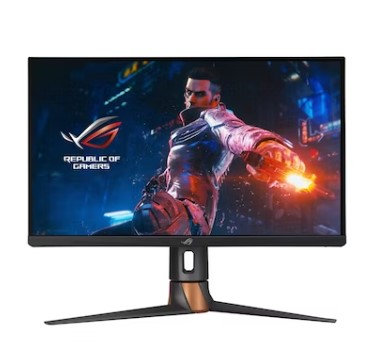
- 27” gaming monitor
- 2560 x 1440 display resolution
- IPS panel
- Up to 360Hz refresh rates
Have You Experienced Gaming with NVIDIA ULMB 2?
Be sure to let us know down below if you’ve experienced gaming with NVIDIA Ultra Low Motion Blur 2. Did you notice a boost in your gaming performance?
